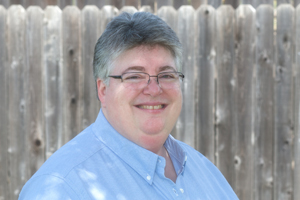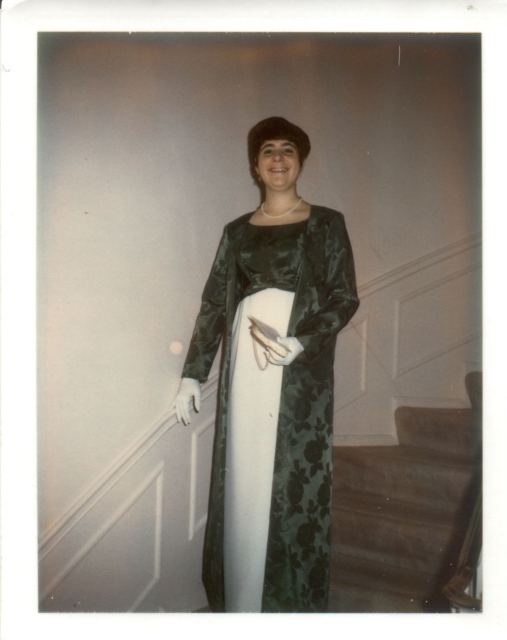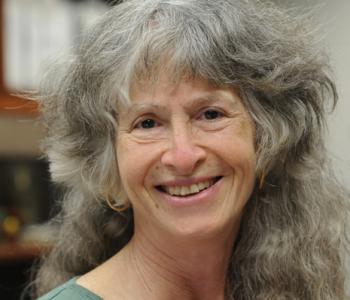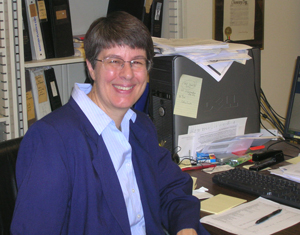Queered Science is a series of profiles meant to highlight queer science and tell you what you need to know about it, for your intellectual edification and so you don’t feel excluded from a major and predominantly heterosexist subset of academia and industry.
Header by Rory Midhani

Rochelle Diamond works at Caltech (the California Institute of Technology) as the applications specialist and lab manager of the Flow Cytometry/Cell Sorting Facility. She is also the chair of the National Organization of Gay and Lesbian Scientists and Technical Professionals, (NOGLSTP) which we’ve mentioned before as an important step young queer scientists can take to get connected to others.

Rochelle Diamond (via sciencemag.org)
We talked on the phone the other day and I asked if I could ask her some personal questions along with the professional ones – she laughed and said absolutely, she’s an open book. Which is a good thing, because if any of you have ever experienced homophobia in the workplace or queer-related adversity in your personal life and moved on (ahem, way too many of us) then you need to know her life story. She grew up and forged a career for herself in the sciences – first as a closeted lesbian, then as an out activist, in a time when LGBT rights were in their nascent stages.
She likes to joke that she had a real coming-out — as a 16-year-old debutante in Phoenix, Arizona, where she grew up.

(via its.caltech.edu)
She was always the black sheep of the family; the youngest child, she couldn’t be swayed from her tomboy ways. Her parents tried putting her in charm school, but she proceeded to fail out: “I didn’t want anything to do with it – they gave my father his money back.” Instead, she was much more interested in science. “My brother would bring home his microscope and we’d go jump the fence to grab some pond water and look at it together.”
In her senior year of college, she got married to her best friend, a man just returning from Vietnam. He had Krohn’s disease and needed health insurance; she had health insurance and good connections in the medical field. Besides, her mother was soon to die, and she wanted to reassure her. “I wanted her to know I’d be ok. Of course,” she laughs, “she still wasn’t pleased because he was Jewish.” But at least this unruly tomboy daughter was respectably married.
Diamond’s husband was aware that she loved women, and for the most part, he didn’t mind. They were married for 10 years until Diamond fell in love with her first serious girlfriend; they realized their marriage wasn’t working and they divorced. And they remain friends today, “He calls for medical advice sometimes, and if he ever needed anything, of course I’d be there,” Diamond says. In 1974 she graduated from UC Santa Barbara with a dual bachelor’s degree in biochemistry and molecular biology.
Diamond says she basically always knew she wasn’t straight, but she waited until both her parents were deceased and she was well-established in adult life to come out to her family; she was fairly sure that revelation wouldn’t go well. And it didn’t, really. “I was 26 or something, when I finally decided to tell my brother. I told him in the car while we were on the freeway — I thought he was going to crash.” Over time, the younger brother and his family grew to accept, if not approve of, her sexuality. Her older brother never has, though. When her younger brother told him, his first instinct was to institutionalize Diamond. “My [younger] brother called me up and said, ‘Make sure you don’t put your address in the phone book’,” just in case her older brother decided to go looking for her.
Diamond got interested in activism from experiences of homophobia of her own. While she was out to some family and close friends, she was definitely not out professionally. But while working at the City of Hope Research Institute a few years later — in the same lab with her husband — a co-worker found out that she was having an affair with another woman in the department, and began to sabotage her work slowly but surely. She was let go soon after because she wasn’t making any progress. The worst part of that is that she didn’t know at that point why her work was going so badly — it just was, so she accepted the decision and assumed the failure had to do with her personally.
“Then my ex-husband called one day, though, and he’d had lunch with some people, and Jim [the co-worker] had a few too many margaritas and told everyone how he’d basically run me out of the department.” That was the first she knew of intrigue. “I thought, oh, you know, I wasn’t an engineer, maybe that explained it…so when I learned I got really, really angry.” And so while she began a new job working at UCLA, she also started going to lesbian and gay scientist meetings in Los Angeles. “I never want to think that anyone else will get fired for their sexual orientation like I was,” Diamond says.
This happened in 1981, and there was no legal recourse for such a situation. Now, you might be thinking it’s a good thing we’re in 2013 now and things like that can’t happen anymore! But you would actually be wrong. The Employment Nondiscrimination Act still has no mention of sexual orientation or gender identity, even though such a clause gets brought up every year, so there is still no national-level protection against LGBT-related discrimination.
After a year of “craziness” at UCLA, Diamond submitted her resume to a new position as a lab manager for a new, very young woman researcher, Dr. Ellen Rothenberg. They talked for five hours in her interview, and Diamond came out explicitly then and there: “I am a lesbian and an activist, and if this is gonna be a problem, we should stop right now.” She was unwilling to go through another situation like she had at City of Hope. But Rothenberg shrugged and said that was not a problem; her last lab manager was gay and he was great, so she didn’t see why it should matter.

Dr. Rothenberg (via caltech.edu)
And from the way Diamond tells it, her work life has been nothing but unicorns and rainbows ever since. They just got a paper published in Science, and another in Blood. “We’re finally starting to solve some problems.”
Diamond has also been happily married for over 30 years to another chemist, Barbara Belmont, the President of American Research and Testing, Inc.

Barbara Belmont (via sciencemag.org)
Belmont was just made a fellow of American Chemical Society for her work on diversity in chemistry. They met in the Los Angeles queer scientist activist world, first as friends involved with other people, but eventually fell in love. Funny how that happens, huh? And they are both in positions where they can be very out and very active without fear of negative repercussions. “I’m kind of more of a flaming lesbian than Barbara, I guess – but both of us, we’re just who we are,” says Diamond.
But they’re both very committed to filling the pipeline with other queer scientists. “We’re out here trying to get other people to come out and not be afraid and push visibility, because that’s what’s going to change the climate.”
They say, “It’s important to understand that if you do come out you will know where a good place to work is and is not. And if you feel uncomfortable after coming out then you shouldn’t be in that place. The point is to be yourself as much as possible. You want to feel safe in your own skin.”
And this is where NOGLSTP comes in. Its mission is to empower lesbian, gay, bisexual, transgender, and queer individuals in the STEM professions, and to educate their surrounding communities about LGBTQ issues. They also manage the popular Queer Scientists of Historical Note list, and run a popular mentoring program where young students or scientists can talk to an older role model. They give out two $5,000 scholarships every year and facilitate communication through the queer science community. They just collaborated with over 20 other STEM professional organizations to apply for a grant for developing a National Research Mentoring Network, that would include LGBTQ students in a larger and more intensive mentoring program. And they coordinate a gay scientist conference every other year called Out to Innovate; the next will be in 2014 in Atlanta, so if you’re interested you can start planning to go now!



Great article!
I love this series and I’m loving all these interviews with these interesting women. Thanks Vivian!
love this, really inspiring!
Absolutely love this article. What an amazing woman!
Thanks so so much for this series. I can’t imagine how awful Diamond must have felt about her scientific abilities while her work was getting sabotaged, when it wasn’t her fault at all! I’m still struggling with how out I want to be in an academic setting; I’d like to think it’s come a long way since then but there are definitely pockets of academia where this still happens.
I used to work in a lab with really nosy people who would gossip a lot, so I worried about being out. But as I told a few of them they were really accepting. I’m grateful to be in a place where this is a non-issue for most people.